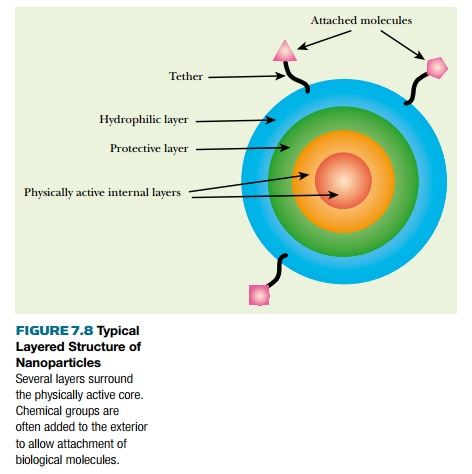Chapter: Biotechnology Applying the Genetic Revolution: Nanobiotechnology
Nanoparticles and Their Uses
NANOPARTICLES
AND THEIR USES
Nanotechnology began with
advances in viewing and measuring the incredibly small. It then moved on to
building structures at the nanoscale. Simple nanostructures are now being used
for a variety of analytical purposes, and a second generation is being
developed for clinical use.

As their name indicates, nanoparticles are particles of
submicron scale—in practice, from 100 nm down to 5 nm in size. They are usually
spherical, but rods, plates, and other shapes are sometimes used. They may be
solid or hollow and are composed of a variety of materials, often in several
discrete layers with separate functions. Typically, there is a central
functional layer, a protective layer, and an outer layer allowing interaction
with the biological world.
The central functional layer
usually displays some useful optical or magnetic behavior. Most popular is
fluorescence. The protective layer shields the functional layer from chemical
damage by air, water, or cell components and conversely shields the cell from
any toxic properties of the chemicals composing the functional layer. The outer
layer(s) allow nanoparticles to be “biocompatible.” This generally involves two
aspects, water solubility and specific recognition. For biological use,
nanoparticles are often made water soluble by adding a hydrophilic outer layer.
In addition, chemical groups must be present on the exterior to allow specific
attachment to other molecules or structures (Fig. 7.8).
Nanoparticles have a variety
of uses in the biological arena:
(a) Fluorescent labeling and optical coding
(b) Detection of pathogenic microorganisms and/or specific
proteins
(c) Purification and manipulation of biological components
(d)
Delivery of pharmaceuticals and/or genes
(e)
Tumor destruction by chemical or thermal means
(f)
Contrast enhancement in magnetic resonance imaging (MRI)
Related Topics